The Las Vegas Motor Speedway, a 1.5-mile tri-oval speedway in Nevada, has been hosting races since 1972. Originally featuring off-road and drag racing, it expanded to include NASCAR, IndyCar, and Champ Car events. Owned by Speedway Motorsports since 1999, the complex is easily accessible from Interstate 15 and Las Vegas Boulevard.
August 14, 1970: Carl "Curly" Price Proposes Motor Speedway
On August 14, 1970, the Las Vegas Review-Journal reported that businessman Carl "Curly" Price aimed to build a drag strip, road course, and oval near Nellis Air Force Base.
February 1971: Construction Begins on Las Vegas Motor Speedway
By February 1971, construction was underway on the Las Vegas Motor Speedway, with work progressing daily.
December 1971: Rival Track Proposal Rejected
In December 1971, Larry Horten proposed a rival track to the Las Vegas Motor Speedway called Las Vegas Raceway Park, but the Clark County Board of County Commissioners rejected the plan on December 21.
1971: Closure of Stardust International Raceway & New Track Plans
Following the closure of Stardust International Raceway in 1971, plans were made to build a new road course and drag strip in North Las Vegas.
January 1972: First Drag Strip Event Announced
In December 1971, it was announced that the Las Vegas Motor Speedway would hold its first drag strip event in January 1972.
February 26, 1972: First Races on Drag Strip
The Las Vegas International Speedrome's drag strip held its first races on February 26, 1972, hosting the National Hot Rod Association (NHRA) Open Drag Championships.
1972: Financial Issues and Decline
In 1972, the Las Vegas Motor Speedway faced significant financial challenges, leading to a decline in major racing events, particularly in drag racing.
1972: Las Vegas International Speedrome Opens
The Las Vegas International Speedrome opened in 1972, initially featuring off-road and drag racing.
1972: Las Vegas Speedrome Completed
The Las Vegas Speedrome, a new road course and drag strip in North Las Vegas, was completed in 1972.
1972: Drag Strip Opens
The drag strip at the Las Vegas Motor Speedway complex opened in 1972, coinciding with the complex's initial opening.
May 19, 1974: Return to Major Racing
On May 19, 1974, the Las Vegas Motor Speedway saw its first major racing event since 1972, marking a potential turning point after financial difficulties.
1975: Revitalization Efforts and NHRA Return
The year 1975 marked a period of revitalization for the Las Vegas Motor Speedway, with the track hosting the Mint 400 and witnessing the return of the NHRA for a major drag racing event after a three-year hiatus.
July 1976: Lease Termination and Legal Battles
In July 1976, track operator Larry Price's lease was officially terminated due to contract breaches, including failure to maintain a gravel stockpile. Price's subsequent legal challenges and public criticism of the city further complicated the situation.
1977: Temporary Lease to Car Clubs
In late 1977, the city of Las Vegas implemented a temporary lease agreement, granting car clubs access and operational control of the track for the first three months of 1978.
February 1978: Bob Van Norman's Proposal and Withdrawal
In February 1978, Bob Van Norman, owner of Craig Road Speedway, submitted a proposal to lease and potentially revitalize the Las Vegas Motor Speedway. However, he withdrew his offer shortly after, citing concerns about favoritism allegations.
January 1979: Search for New Management and Temporary Lease
Faced with mounting financial losses, the city of Las Vegas initiated a search for new management for the Las Vegas Motor Speedway in January 1979. A group of businessmen, including Van Norman, formed Las Vegas Recreation, Inc. and secured a temporary lease, marking a potential revival for the struggling track.
February 1980: Larry Price Loses Appeal and Lease Extension
In February 1980, Larry Price's legal efforts to reclaim control of the Las Vegas Motor Speedway were dealt a blow as his appeal was unsuccessful. Coinciding with this development, Las Vegas Recreation, Inc., the current leaseholder, received a lease extension until the end of 1980.
1982: Van Norman Relinquishes Craig Road Speedway
In 1982, Bob Van Norman was forced to relinquish ownership of the Craig Road Speedway to First Interstate Bank to settle outstanding debts related to his family business, leaving the local stock car racing community without a dedicated track.
1984: Revival of Stock Car Racing
The Las Vegas International Speedway opted to host stock car racing events in 1984, breathing life back into the local stock car racing scene after a period of inactivity.
1985: Addition of 3/8-Mile Oval
During Alex Rodriguez's ownership of the Las Vegas Speedrome, a 3/8 mile oval, now known as The Bullring, was added in 1985.
1985: New Oval Track Opens
The Las Vegas International Speedway inaugurated a new 1/3-mile oval track in November 1985, utilizing donated barriers from the Caesars Palace Grand Prix, further enhancing the facility's offerings.
1987: NHRA Recognition and Road Course Repaving
By 1987, the Las Vegas International Speedway gained recognition as one of the top facilities in the United States, earning accolades from the NHRA. The track management also revealed plans to repave the road course in collaboration with the Sports Car Club of America (SCCA), further demonstrating its commitment to improvement.
March 1988: Lease Revocation and Potential Sale
In March 1988, the city council initiated proceedings to revoke Rodriguez's lease for the Las Vegas Motor Speedway, citing unpaid rent and unauthorized food sales without proper permits. Despite defending his management and highlighting improvements made to the track, the decision to put the facility up for sale was approved, with the stipulation that the new owner must maintain it as a racetrack for a minimum of 10 years.
May 1989: Richie Clyne Purchases Track Complex
In May 1989, Richie Clyne, director of the Imperial Palace Hotel's automobile museum, purchased the Las Vegas Motor Speedway for $1,070,000. Clyne, alongside investor G. Robert Diero, expressed a vision to revitalize the aging facility, renaming it the Las Vegas International Raceway and aiming to attract major racing events.
December 1990: End of Rodriguez's Operation
December 1990 marked the end of Rodriguez's tenure operating the Las Vegas Motor Speedway, despite his efforts to defend his management and the improvements made to the facility.
1990: Revitalization Plans and Nissan 400
By 1990, the Las Vegas Motor Speedway, now under Clyne's ownership, faced an uphill battle for revitalization. Despite its reputation as "old, dirty, and tattered," Clyne, influenced by motorsport figures Bob Bahre and Tom Wheatcroft, saw potential beyond his initial plans for an industrial park. The track hosted its first race under Clyne's leadership, the newly rebranded Nissan 400 (formerly the Mint 400), signaling a commitment to attracting prestigious events.
1990: Name Change to Las Vegas International Speedway
The Las Vegas International Speedrome, which opened in 1972, was renamed to Las Vegas International Speedway in 1990.
1991: Expansion and Renovation Plans
In 1991, the Las Vegas International Raceway focused on expanding its event calendar and implementing general renovations, reflecting a commitment to growth and improvement under Clyne's leadership.
1992: Name Change to Las Vegas Speedway
The Las Vegas International Speedrome was renamed to Las Vegas Speedway in 1992.
1993: New Management and Name Change
In 1993, amateur racers David Juberg and Craig Graham assumed management of the Las Vegas International Raceway, leasing it from Richie Clyne. Juberg and Graham renamed the facility the Las Vegas Speedway Park, marking a change in leadership and a continued effort to establish the track. Despite these changes, the Speedway Park still lacked major events, facing challenges in attracting prominent racing series due to a combination of factors, including environmental concerns surrounding off-road racing.
1993: Name Change to Las Vegas Speedway Park
The Las Vegas International Speedway, formerly known as Las Vegas International Speedrome, was renamed to Las Vegas Speedway Park in 1993.
October 16, 1994: Clyne and Juberg's Bid for Modern Racing Facility
On October 16, 1994, the Review-Journal reported that Clyne and Juberg were interested in making a bid for a modern racing facility in Las Vegas. This marked an important step towards the development of a significant racing venue in the area.
January 1995: Confirmation of Track Plans
In January 1995, Clyne officially confirmed plans to build a racing track along Interstate 15 on a 1,100-acre plot of land, including a 40-acre industrial park. This confirmation solidified the vision for a modern racing facility in Las Vegas.
January 1996: Ray Wilkings Named General Manager
In January 1996, Ray Wilkings was named the general manager of the new racing track. This appointment was a key step in the management and operational setup of the facility, which was under construction at the time.
September 13, 1996: Official Opening for IndyCar Practice
On September 13, 1996, the Las Vegas Motor Speedway officially opened to the public for IndyCar practice. The event marked the beginning of the track's operational history, despite being marred by heavy winds and numerous crashes.
September 15, 1996: Planned IndyCar Race to Christen New Track
On September 15, 1996, Clyne and IndyCar Series president Tony George announced a 200-mile race to christen the new track. This announcement came as part of the developments for the new racing facility near the Las Vegas Speedway Park.
September 1996: First IndyCar Races
In September 1996, the Las Vegas Motor Speedway hosted its first IndyCar races, marking the track's debut in major racing events. These races were part of the inaugural season at the new facility.
November 1996: Opening of Clay Dirt Oval
A 1/2 mile clay dirt oval opened at the Las Vegas Motor Speedway complex in November 1996, hosting a World of Outlaws event.
1996: Infield Road Course Constructed
An infield road course complex was built as part of the Las Vegas Motor Speedway's construction in 1996.
1996: 1.5-Mile Oval Completed
Plans for a 1.5-mile oval at the Las Vegas Speedrome complex, spearheaded by Richie Clyne, Ralph Engelstad, and Bill Bennett, were completed in 1996.
1996: Completion of 1.5-Mile Oval
The construction of a 1.5-mile oval at the Las Vegas Speedway Park was completed in 1996.
December 1998: Bruton Smith Announces Purchase Plans
In December 1998, Bruton Smith announced plans to buy out the Las Vegas Motor Speedway and its complex for around $215 million. He intended to renovate amenities and sell off 300 acres of industrial space as part of this acquisition.
1998: First NASCAR Busch Series Race and Winston Cup Series Race Weekend
In 1998, the Las Vegas Motor Speedway hosted its first NASCAR Busch Series race and won the rights to host a NASCAR Winston Cup Series race weekend. This year marked significant milestones for the track as it expanded its racing events.
1998: SMI Purchases Complex
Speedway Motorsports, Inc. (SMI) and its founder, Bruton Smith, purchased the Las Vegas Speedrome complex in 1998.
1999: Announcement of New Drag Strip
After purchasing the Las Vegas Motor Speedway, Bruton Smith announced plans for a new 1/4 mile drag strip to replace the one built in 1972.
1999: Speedway Motorsports, LLC Acquires Track Complex
Speedway Motorsports, LLC (SMI), founded by Bruton Smith, purchased the Las Vegas Speedway complex in 1999.
April 2000: Opening of "The Strip" Drag Strip
A new 1/4 mile drag strip, named "The Strip," opened at the Las Vegas Motor Speedway complex in April 2000, replacing the original strip built in 1972.
2000: Modification and Renaming of Bullring
In 2000, the Las Vegas Motor Speedway modified its 3/8 mile oval track and renamed it the 'Bullring.' This change was part of ongoing developments and improvements at the racing facility.
2000: Annual IndyCar Races Until 2000
Until 2000, the Las Vegas Motor Speedway hosted an annual IndyCar race as part of the Indy Racing League. This period established the track as a regular venue for IndyCar events.
2004: Champ Car World Series Race Announcement
In 2004, the newly-named Champ Car World Series announced a race at the Las Vegas Motor Speedway on July 7, with the event occurring on September 25. This announcement came after the bankruptcy of Championship Auto Racing Teams (CART).
2005: Champ Car Race
In 2005, the Las Vegas Motor Speedway hosted another Champ Car World Series race. However, the series refused to renew for the following year, ending its brief tenure at the track.
2006: Track Modifications & New Oval
Before 2006, the Las Vegas Motor Speedway had 12 degrees of banking in the turns, which was changed to 20 degrees. A 1/4 mile oval was also built within the main track's frontstretch in 2006.
2006: $25-27 Million Renovation Project
In 2006, Chris Powell announced a $25-27 million renovation project for the Las Vegas Motor Speedway. The project included changes such as altering the banking in turns, increasing capacity, and redesigning the garage and media center.
2006: Champ Car Series Refusal to Renew
In 2006, the Champ Car World Series refused to renew its race at the Las Vegas Motor Speedway, marking the end of its short-lived presence at the venue. This decision was part of the broader changes in the series' schedule.
2006: Renovations and New Amenities
In 2006, the Las Vegas Motor Speedway underwent renovations, including the construction of the Neon Garage, the LocaliQ Digital Center, and a proposed condominium tower that was later canceled due to safety concerns raised by Nellis Air Force Base.
2007: Speculation of NASCAR Weekend Move from New Hampshire
In 2007, speculation arose that one of New Hampshire International Raceway's NASCAR Cup Series weekends might be moved to Las Vegas following Bruton Smith's acquisition of the track. This led to discussions about expanding Las Vegas's NASCAR schedule.
2011: Electric Daisy Carnival Moves to Las Vegas
In 2011, the Electric Daisy Carnival moved its flagship location to Las Vegas Motor Speedway from Los Angeles. The move followed controversies in Los Angeles involving rampant underage drug use, which resulted in multiple injuries and the death of a 15-year-old. The event has been held annually at the track since then.
2011: IndyCar Series Uses Different Track Length
In 2011, the IndyCar Series used a length of 1.544 miles for the Las Vegas Motor Speedway, different from the standard 1.5 miles.
2011: IZOD IndyCar World Championship Tragedy
In 2011, the Las Vegas Motor Speedway was set to host the IZOD IndyCar World Championship as the season finale. A $5 million bounty was offered to any non-IndyCar driver who could win, but it was ultimately given to part-time driver Dan Wheldon. Unfortunately, on lap 11, a crash involving 15 cars led to Wheldon's death from massive head injuries. The race was cancelled in response to the tragedy, and the track later requested a buyout of their contract with IndyCar for future events.
2011: Hosting Electric Daisy Carnival and Dan Wheldon's Fatal Accident
In 2011, the Las Vegas Motor Speedway won the rights to host the flagship branch of the Electric Daisy Carnival (EDC) following controversy in Los Angeles. In the same year, the track experienced its first fatal auto racing accident when Dan Wheldon died during the IZOD IndyCar World Championship.
2012: Cancellation of IndyCar Races
Following the tragic death of Dan Wheldon in 2011, Las Vegas Motor Speedway and Speedway Motorsports requested a buyout of their contract with IndyCar, resulting in the cancellation of their IndyCar races for 2012.
2013: World Long Drive Championship
In 2013, Las Vegas Motor Speedway hosted the World Long Drive Championship, showcasing long-distance golf drives.
2014: Red Bull Air Race World Championship
In 2014, Las Vegas Motor Speedway hosted a race for the Red Bull Air Race World Championship. However, the event was abandoned due to bad weather, and results were determined based on qualifying speeds.
2015: Successful Red Bull Air Race
In 2015, Las Vegas Motor Speedway successfully hosted a race for the Red Bull Air Race World Championship, following the previous year's weather-related cancellation.
2015: Seat Removal for RV Parking
In 2015, the Las Vegas Motor Speedway announced the removal of 15,000 seats in the track's third and fourth turns to make way for RV parking. This change was part of a broader effort to enhance the spectator experience.
2015: Las Vegas Motor Speedway Size
The Las Vegas Motor Speedway complex sits on over 1,200 acres of land as of 2015, according to the Las Vegas Review-Journal
2016: Red Bull Air Race Cancellation
In 2016, the scheduled Red Bull Air Race at Las Vegas Motor Speedway was entirely cancelled due to high winds.
2017: Drag Strip Expansion
In 2017, the drag strip at the Las Vegas Motor Speedway was expanded to four lanes, allowing four cars to race simultaneously. This development aimed to enhance the racing experience and accommodate larger events.
2017: Capacity Decrease for Premium Seating
In 2017, the track decreased its capacity to around 80,000 seats to make way for increased premium seating options. This adjustment aimed to offer a more luxurious experience for attendees.
2017: Expansion of "The Strip" Drag Strip
The "The Strip" drag strip at the Las Vegas Motor Speedway was expanded to four lanes in 2017.
2020: COVID-19 Pandemic Graduation Ceremony
In 2020, amid the COVID-19 pandemic, Las Vegas Motor Speedway held a graduation ceremony for Faith Lutheran High School, a private Lutheran school in Summerlin.
January 2022: Indy Autonomous Challenge at CES
In January 2022, IndyCar returned to Las Vegas Motor Speedway with the Indy Autonomous Challenge, a driverless open-wheel race held as part of the Consumer Electronics Show (CES). This event has since become an annual tradition.
March 2023: Fastest Official Race Lap Records
As of March 2023, the fastest official race lap records at Las Vegas Motor Speedway have been documented, showcasing the top speeds achieved at the track.
2023: Las Vegas Motor Speedway Capacity
As of 2023, the Las Vegas Motor Speedway has a stated capacity of 80,000, according to the Las Vegas Sun.
2023: Track Capacity Reduced
As of 2023, the Las Vegas Motor Speedway has a stated capacity of 80,000, down from its peak of over 140,000 in the 2000s.
2023: Renewed Attention for Empty Grandstands
By 2023, the Las Vegas Motor Speedway received renewed attention for television visuals showing empty areas of grandstands during the 2023 South Point 400. This highlighted ongoing issues with attendance at major racing events.
2023: FoodieLand Night Market
Since 2023, Las Vegas Motor Speedway has hosted a Las Vegas branch of the FoodieLand Night Market, a popular food festival.
Mentioned in this timeline
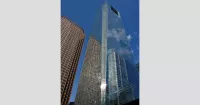
Xfinity a brand of Comcast Corporation launched in provides consumer...
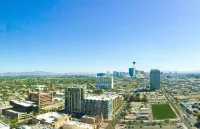
Las Vegas Nevada's most populous city and the seat of...
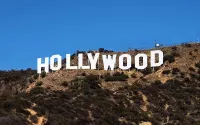
Los Angeles is the most populous city in California and...
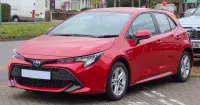
A car also known as an automobile is a wheeled...
Nevada a landlocked state in the Western US is the...
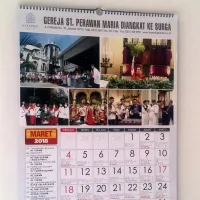
Calendars are systems for organizing days by naming time periods...
Trending
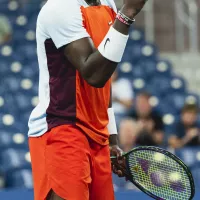
5 months ago Frances Tiafoe faces Humbert in Cincinnati Open; previews, predictions, and betting insights emerge.
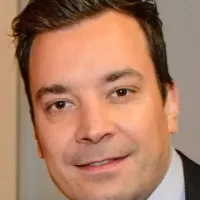
8 months ago The Weeknd's Late Night Interview Debut with Fallon, Bart Simpson's Fallon Ignorance.
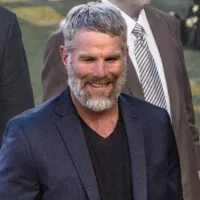
6 months ago Morgan Wallen Headlines Camp Randall Concert After 28-Year Hiatus, Benefiting Madison Residents.
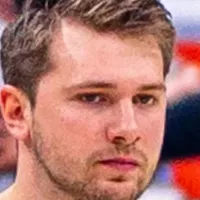
5 months ago Luka Don?i? Reveals Body Transformation After Intense Offseason Training: 'Body Looks Better'
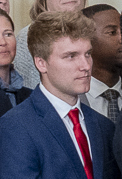
1 month ago Cam Spencer Shines Off Bench for Grizzlies, Continuing Impressive Performance

The Golden Globe Awards are annual accolades recognizing excellence in film and television both domestic and international Established in the...
Popular

Stranger Things created by the Duffer Brothers is a popular...

XXXTentacion born Jahseh Dwayne Ricardo Onfroy was a controversial yet...

Kelsey Grammer is an accomplished American actor producer and singer...

Candace Owens is an American conservative political commentator and author...

Bernie Sanders is a prominent American politician currently serving as...

Melania Trump a Slovenian-American former model has served as First...
